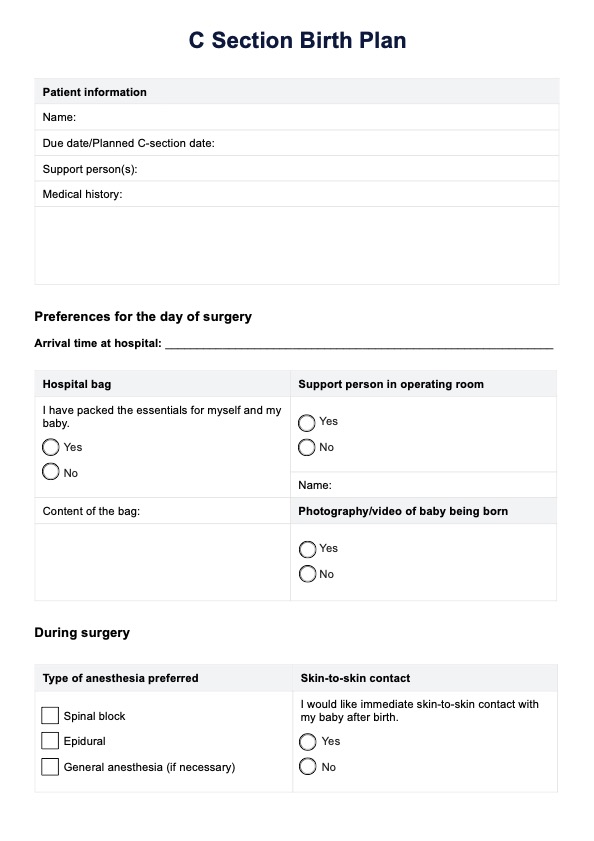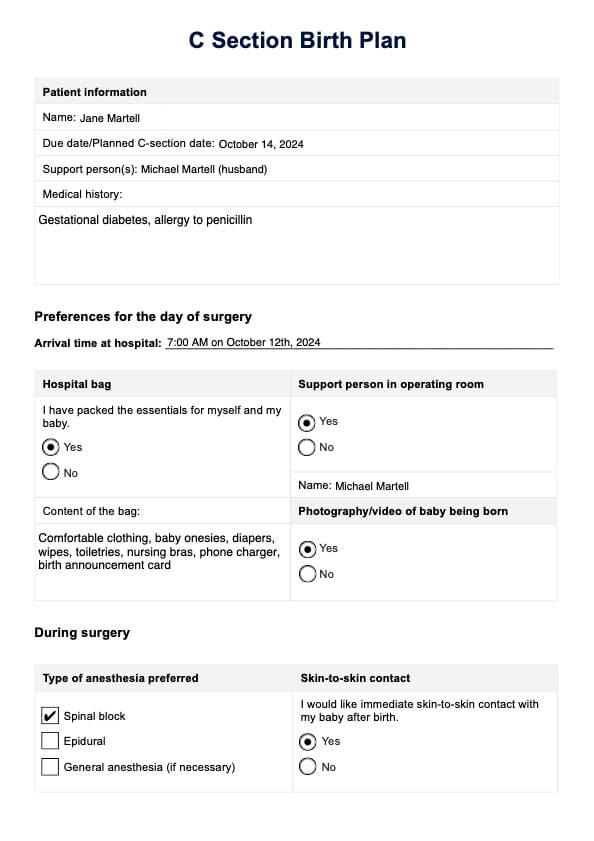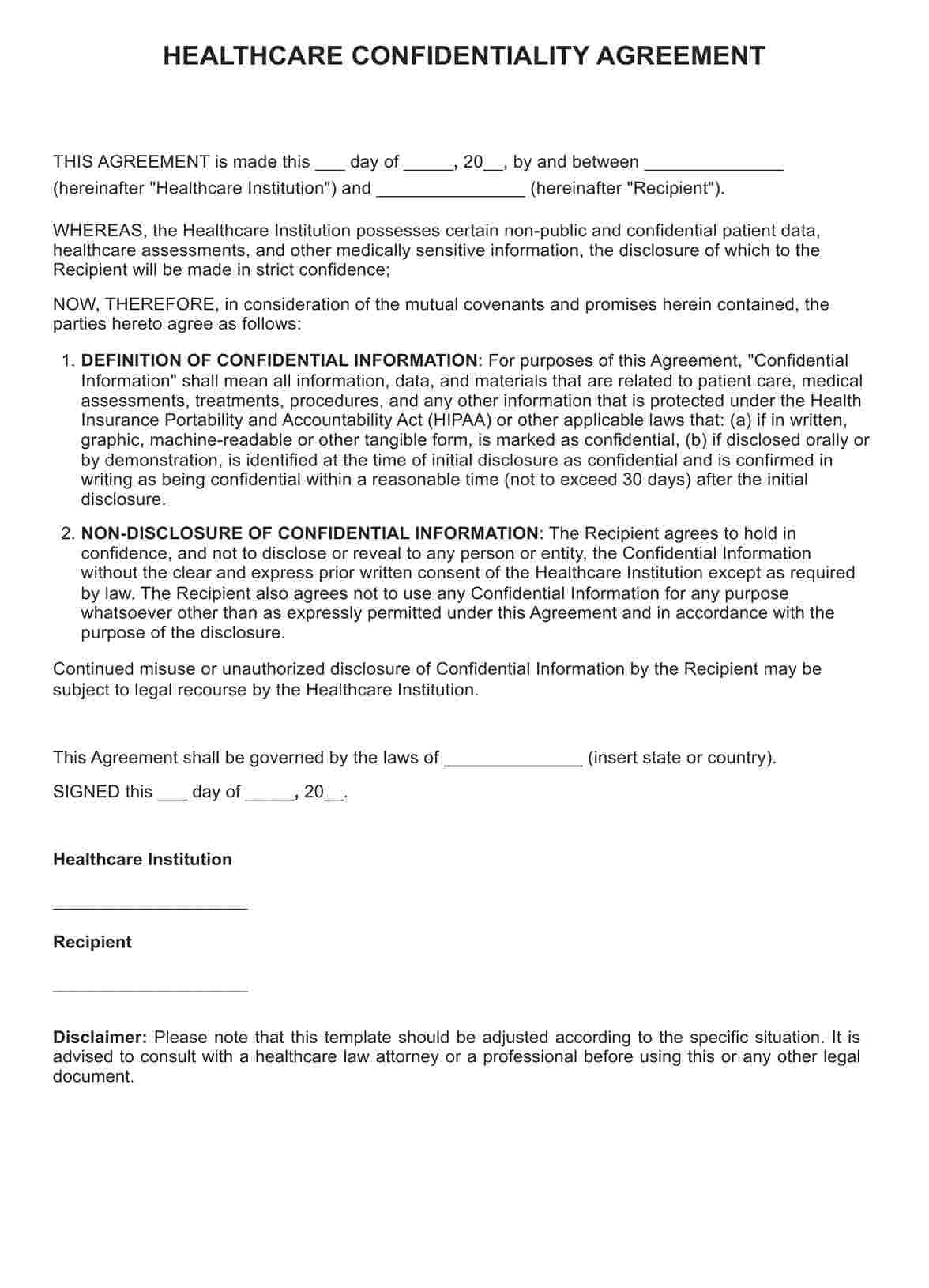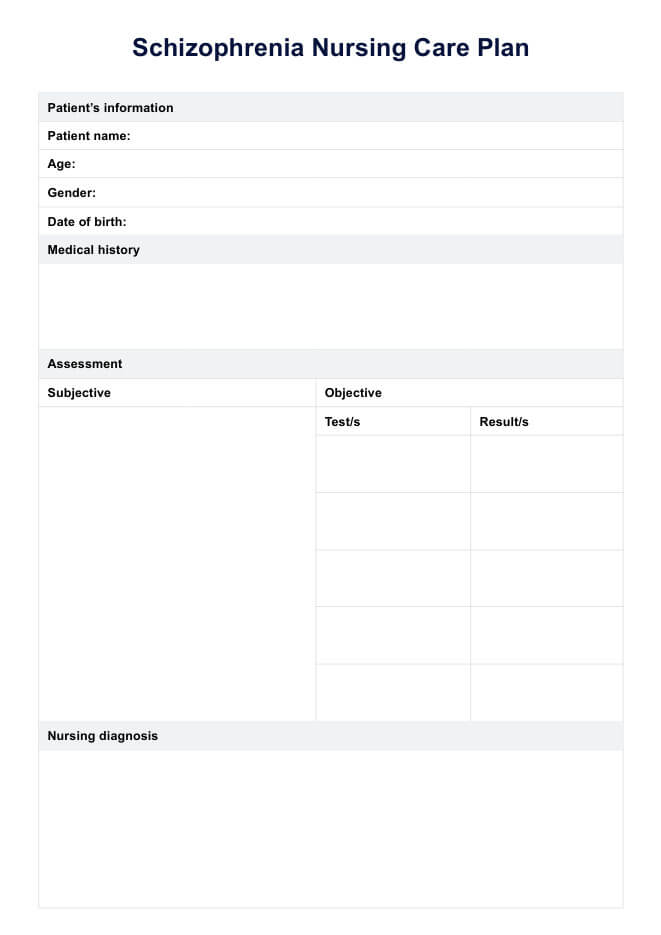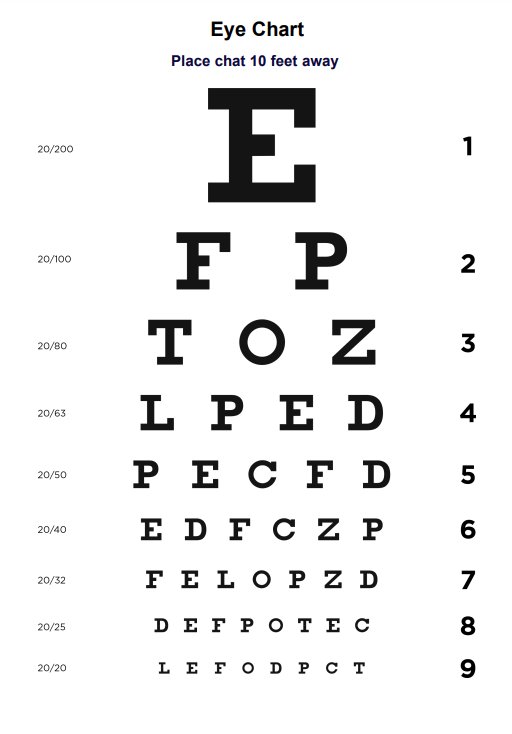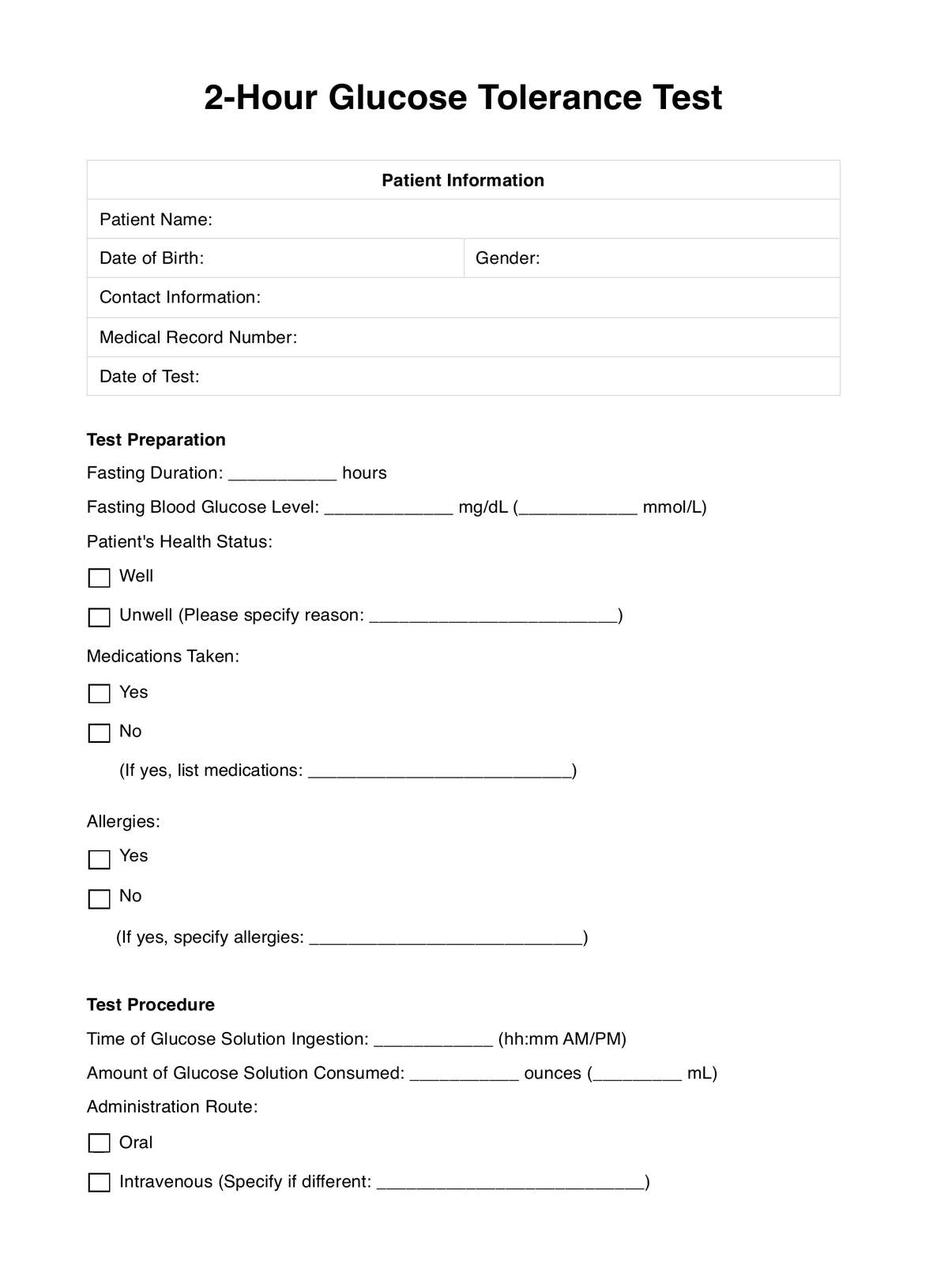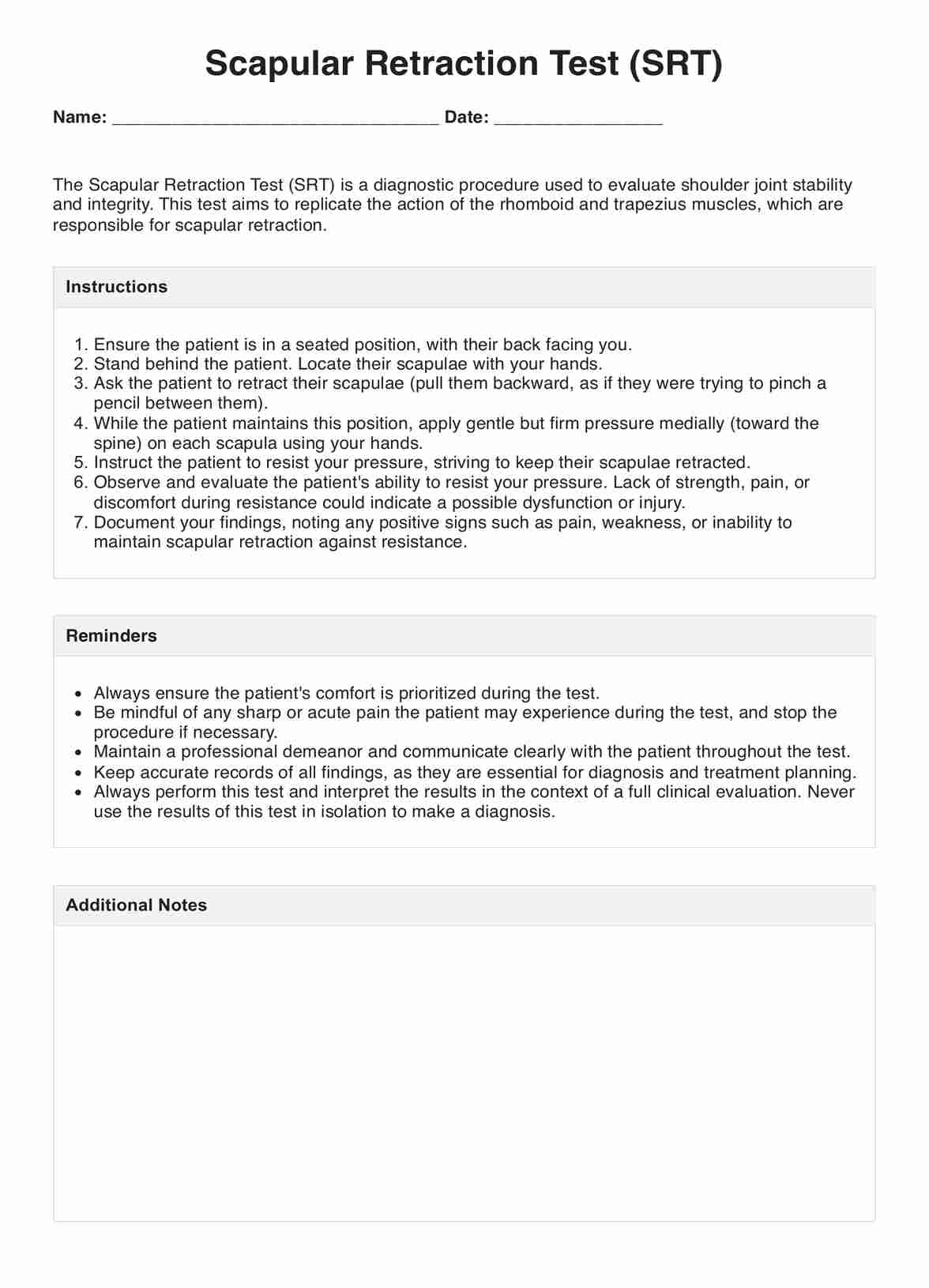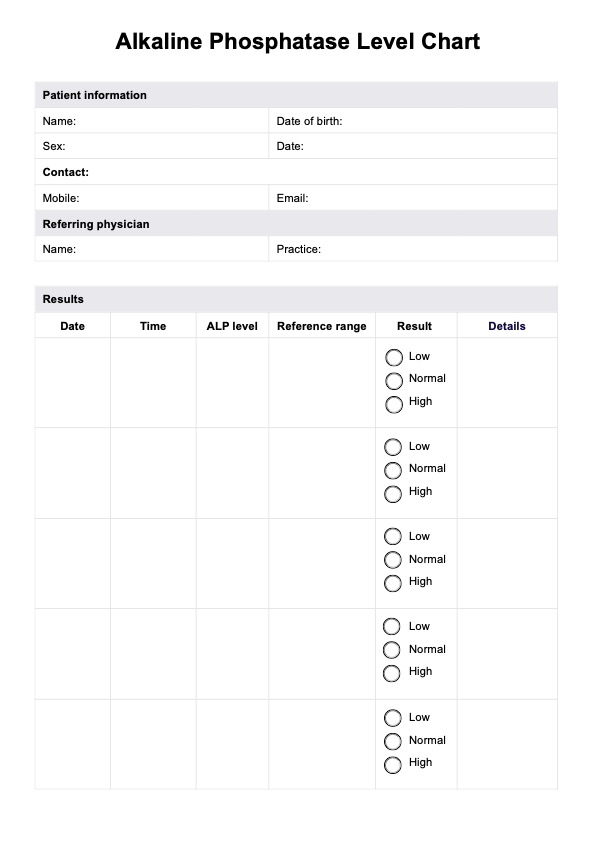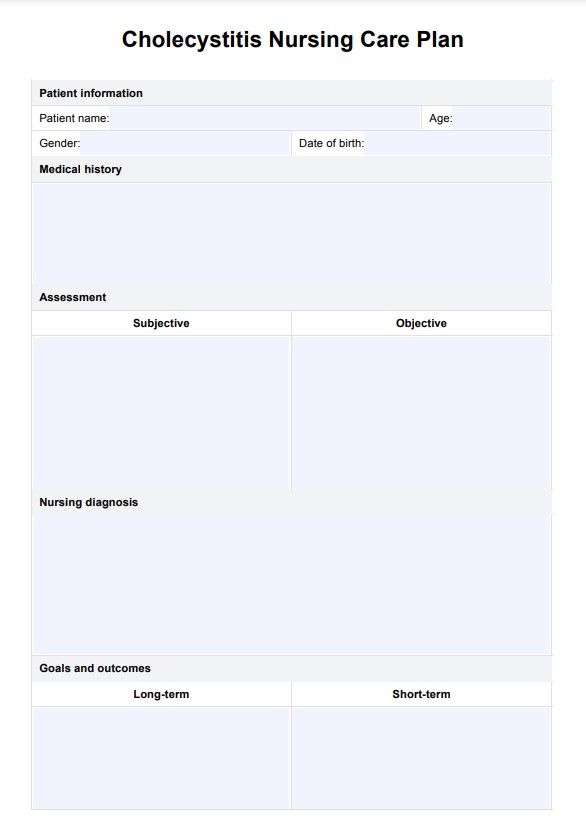C Section Birth Plan
Learn about the C Section Birth Plan Template and how it can work with you to empower women during their birth experience.


What is a C-Section Birth Plan Template?
A C-Section Birth Plan Template is a structured document to help expectant parents outline their preferences and expectations for a Caesarean birth. This template serves as a communication tool between parents and healthcare providers, ensuring everyone understands the desires for the birth experience. It typically includes details about the operating room setup, preferences for skin-to-skin contact with the baby immediately after delivery, and decisions regarding the umbilical cord, such as delayed cord clamping.
This template can be particularly beneficial for those considering an elective Caesarean birth. It allows parents to express their wishes regarding the type of anesthesia, the involvement of support persons, and any specific techniques, such as gentle Cesarean methods, that enhance the experience. The template also encourages parents to share pertinent medical history, which is crucial for ensuring a safe procedure, as a C-section is a major surgery.
Including elements like the contents of the hospital bag and preferences for the baby’s care after birth—such as whether they wish for a vaginal delivery if circumstances allow—can further personalize the birth plan. Overall, a C-Section Birth Plan Template helps create a supportive environment during this significant moment of a baby's birth.
C Section Birth Plan Template
C Section Birth Plan Example
How does it work?
Creating a C-Section Birth Plan involves several straightforward steps that ensure expectant parents can effectively communicate their preferences and concerns regarding their upcoming Caesarean birth. This collaborative approach enhances the overall birth experience and prepares both parents and healthcare providers for a smoother process.
Access and use the template
First, practitioners can access a C-Section Birth Plan Template through platforms like Carepatron, which you can also provide to patients. This user-friendly template allows them to fill out their preferences regarding the delivery process, including their choices for anesthesia, skin-to-skin contact, and any special requests related to the umbilical cord.
Review the birth plan template
Once the template is filled out, parents must review it thoroughly. This step ensures that all preferences are accurately captured and that nothing is overlooked. It also provides an opportunity to discuss any questions or concerns they may have regarding their medical history or the procedure itself.
Discuss the plan with the patient
Next, healthcare practitioners should schedule a discussion with the patient to go over the birth plan. This conversation helps clarify any points of confusion and reinforces the patient's preferences. Open dialogue allows practitioners to explain the logistics of the operating room, the significance of various requests, and how they align with best practices for health and care excellence.
Make adjustments
Finally, based on the discussion, adjustments can be made to the C-Section Birth Plan. This ensures that the plan is tailored to the individual’s needs and circumstances, accommodating any changes that may arise due to medical advice or unforeseen situations. By following these steps, parents can feel more empowered and informed as they prepare for the birth of their baby.
When would you use this template?
Using a Cesarean birth plan template is beneficial in various situations where clarity and communication are essential for the birth experience. Here are some key instances when this template can be particularly useful:
Planned C-section
For expectant parents undergoing a planned C-section, the birth plan template is crucial. It allows them to outline their preferences for the day of the baby's birth, including the involvement of a support person and any specific desires for the surgical process. This ensures that everyone involved, including the medical team, is aligned on expectations, which can lead to a more positive experience.
Elective Caesarean birth
In cases of elective caesarean birth, the template helps parents articulate their wishes in a structured way. They can specify preferences such as the use of a gentle cesarean technique, which prioritizes the emotional connection at the moment the baby is born. This can include immediate skin-to-skin contact, enabling the parent to hold their baby shortly after delivery, fostering bonding right away.
Multiple births
Parents with other children may also find the C-Section Birth Plan Template useful. They can create a more inclusive atmosphere during the new baby's arrival by detailing how their other children will be involved, such as through visits. This preparation helps ensure that all family members feel included in the experience.
Post-surgery considerations
The template can also address post-surgery preferences, such as the use of a urinary catheter, and the expected recovery process. Knowing what to expect in the few hours following the C-section can reduce anxiety and prepare parents for any necessary adjustments to their care routine.
Other birthing types
While a C-section is a common method of delivery, there are several other birthing options available to expectant parents. Each type of birth offers different experiences and approaches, depending on the preferences of the mother, the baby's position, and any medical reasons that may affect the process.
Vaginal birth
Many women experience vaginal birth, which involves delivering the baby through the birth canal. This is considered the most natural method and often allows immediate bonding as the baby hears their mother's voice and feels skin-to-skin contact. Vaginal delivery is usually recommended when there are no medical reasons for alternative methods and is typically followed by shorter recovery times compared to cesarean sections.
Family-centered Cesarean birth
A family-centered Cesarean birth, sometimes called a gentle C-section, is designed to create a more personal and intimate experience during a Caesarean section. It allows the parent to hold their baby immediately after delivery and fosters a bonding experience similar to that of a vaginal birth. Hospital staff may encourage techniques like lowering the surgical drape so the parents can watch the baby being born.
Emergency C-section
An emergency Cesarean section may be performed when complications arise during labor. This option ensures the safety of both the mother and the baby when vaginal delivery is no longer possible. While this method may not offer the same family-centered experience as a planned C-section, hospital staff work to make the process as smooth as possible, ensuring that the new baby is delivered safely under urgent circumstances.
Vaginal birth after Cesarean (VBAC)
For many women who have previously undergone C-sections, a vaginal birth after cesarean (VBAC) may be a viable option. This allows the mother to attempt a vaginal delivery for their new baby, provided that it is safe to do so based on her medical history. VBAC can offer a more natural birth experience but requires careful monitoring by healthcare professionals.
Commonly asked questions
Yes, having a birth plan for a planned C-section helps ensure that your preferences for the surgery, such as skin-to-skin contact and the role of the support person, are communicated clearly. It allows healthcare providers to tailor the birth experience to your needs, making the process smoother and more personalized.
Planned C-sections are typically scheduled around 39 weeks of pregnancy to minimize the risk of labor starting naturally and to ensure the baby is fully developed. However, in some cases, they may be scheduled earlier for medical reasons.
While the actual C-section surgery is performed under anesthesia and is not painful, recovery from a planned C-section can involve discomfort or pain as the body heals from the major surgery. Many women report that planned C-sections are more manageable than emergency C-sections due to better preparation and recovery support.
For a planned C-section, patients will typically receive either a spinal block or an epidural to numb the lower half of the body while allowing them to stay awake and aware during the procedure. Pain relief medications are also provided post-surgery to help with recovery and manage discomfort.


